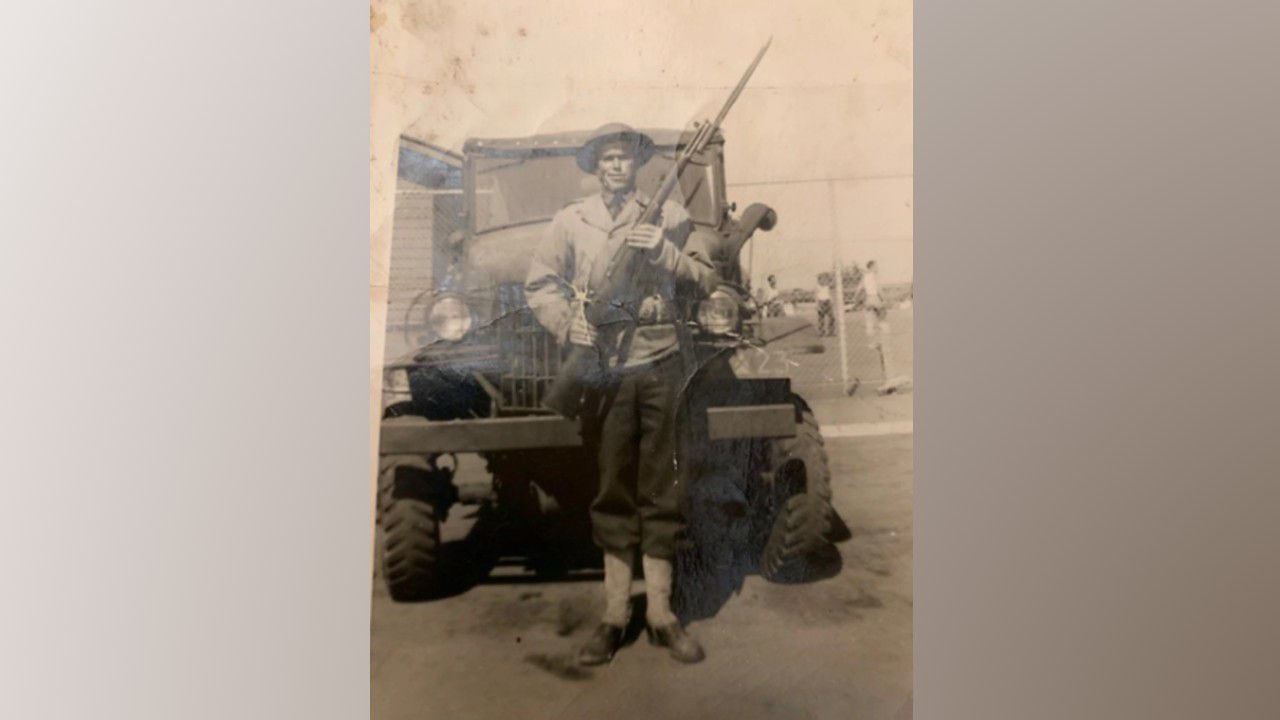

ANDERSON, S.C. (AP) — Nearly eight decades have passed since William Linder, known to loved ones as “Bud,” was killed in one of the longest and most costly battles of World War II.
For years, his remains were buried in a cemetery in Belgium — an unknown soldier.
But on Oct. 29, the Army staff sergeant from Piedmont, born 107 years prior, reached his final resting place back home in Anderson County with all the pomp and circumstance of a fallen war hero returning home.
Shots rang out in salute by an Army honor guard, which carried his casket draped with an American flag.
One of Linder’s grand-nieces, Melanie Hitt, spoke to family and military veterans gathered at Dolly Cooper Veterans Cemetery for the belated funeral and thanked the modern miracle of DNA tracing, which was used to determine his identity last month.
Hitt shared the importance of the family handing down stories of “Uncle Bud,” a man younger generations never knew.
“They would keep the stories alive from the old family,” she said. “They would talk about the things they used to do, so all of us kids knew that there was an Uncle Bud. We always heard that grandma said he’ll come home one day — and he is.”
The day of Linder’s funeral was gloomy and gray, fog hovering just above with a chilly wind blowing. It was an echo of the unforgiving cold, snow and desolation he faced in the densely wooded Hurtgen Forest of Germany as the Allies reached a stalemate on the Western Front in November 1944, months after storming the beaches of Normandy.
Linder was assigned to Company E, 12th Infantry Regiment of the 4th Infantry Division.
Wilton Fowler, a state chaplain of the Army who served in West Berlin during the Cold War, described the conditions Linder faced in the Battle of Hurtgen, a five-month series of battles fought by the Army that ended in an Allied breakthrough but at heavy cost and, in retrospect, viewed by historians as an ill-advised offensive.
The Germans, Fowler told the audience, knew the landscape well and prepared the field for battle years before. The Army’s first objective was to secure Rur River dam so the enemy couldn’t release floodwaters. But the advance stalled.
“The results were horrific. The battle took on the form of a trench war, like we knew from World War I,” Fowler said.
It was the longest battle in U.S. history, and, Fowler said, was a “painful chapter” overshadowed by more-successful campaigns. However, “within this forest, there was a man from Piedmont, South Carolina, who offered his life so that other lives might be saved.”
Linder was reported missing in action on Nov. 16, 1944. The Germans had not listed him as a prisoner of war. After a year passed, the War Department officially presumed him dead.
After decades of mystery, the U.S. Defense POW/MIA Accounting Agency (DPAA) announced on Oct. 18 that scientists had confirmed Linder’s identity three weeks earlier through DNA testing, and dental and anthropological analysis.
Following the war, according to the release, the American Graves Registration Command investigated the whereabouts of the remains of soldiers in Europe. After several investigations in the Hurtgen Forest area between 1946 and 1950, Linder’s remains could not be found. In December 1951, he was declared “non-recoverable.”
But while studying American losses in the forest, a DPAA historian believed that a set of remains discovered by local residents in 1947 in the aftermath of a forest fire could be Linder. The remains, and the time buried as unknown in the Ardennes American Cemetery in Belgium, were disinterred in April 2019 for testing at an Air Force base in Nebraska.
Linder’s name is recorded on the Tablets of the Missing at Henri-Chapelle American Cemetery, an American Battle Monuments Commission site in Henri-Chapelle, Belgium, along with others still missing from World War II. A rosette will be placed next to his name to indicate he has been accounted for.


Be the first to comment